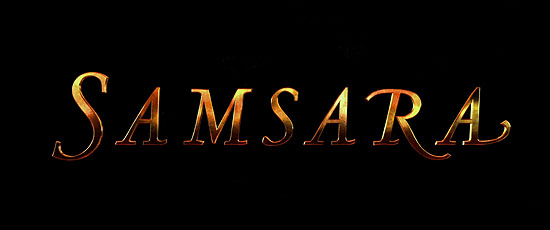
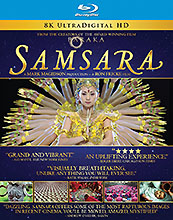 BUY FROM AMAZON: CLICK HERE!
BUY FROM AMAZON: CLICK HERE!
MSRP $34.98
RATED PG-13
STUDIO MPI Home Video
RUNNING TIME 101 minutes
SPECIAL FEATURES
• Making-of Featurettes
• Trailers
The Pitch
You won’t believe it’s not CGI.
The Humans
Ron Fricke, Mark Magidson
The Nutshell
In this follow-up to 1992’s Baraka, filmmaking team Ron Fricke and Mark Magidson bring their amazing process to the screen again. Shot entirely in 70mm, Samsara is a hypnotic montage of striking images filmed over a span of five years.
The Lowdown

Non-narrative, non-verbal feature length film is an odd format for someone like me, because my favorite thing about film is its ability to tell a story. I had not seen Baraka until after my first viewing of Samsara, so I came in not really knowing what to expect.
The film is a ninety-five minute montage designed to evoke deep, but vague feelings of the cyclical nature of life. There are sections of the film devoted to religions, art, industry, the destructive power of nature, the impermanence of human life, the persistence of human life, war, holy spaces created by man and nature, and so on.
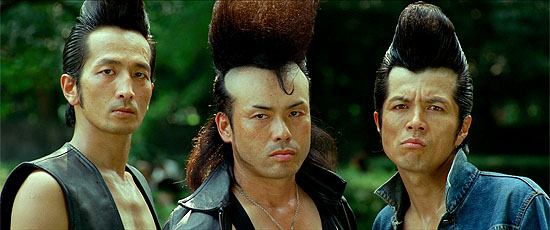
“You got a problem with silly hair? ‘Cause this silly hair will put you on the ground.”
What Samsara lacks in narrative is heartily compensated by the most beautiful cinematography I’ve ever seen in a documentary. Shot on Panavision Super 70 with seemingly all natural light, Samsara is a work of tremendous, stunning beauty. It is a testament to the resolution of large format photography. It is a deeply moving and haunting work that demanded years of planning and travel.
So how long does it take to climb up a mountain, scout the perfect locations, set up the perfect camera placements, capture perfect time-lapses and camera moves, pack your shit, climb down a mountain, then get on a plane and do it all over again? Five years, evidently. Fricke, Magidson, and crew spent over five years in production, traveling the globe. All that time spent perfecting their setups is apparent on screen.
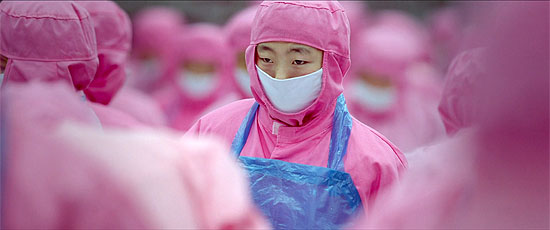
Suddenly, Henry realized he fucking hated magenta.
Every pan, tilt, push, tracking shot, motion control shot, and time lapse is perfectly executed. There’s nothing onscreen that is captured off the cuff. Everything feels very composed, but not stiff. The frequent shifts in location, light, tone, and color keep Samsara fresh and fascinating throughout its entire running time.
Another one of the film’s highlights is the soundtrack. Every piece of music chosen or composed for the film is, in a word, perfect. The music is ethnic but not stereotypical, spiritual but not sacred. It straddles the perfect line between electronic and acoustic, and plays a major role in creating the film’s various moods. Unlike Baraka, Samsara’s music was added after the edit, so the flow of the film almost entirely relies upon the natural cadence of the images themselves. While the soundtrack helps bridge a few potentially jarring cuts, it’s mostly just delicious audio frosting on the cake.
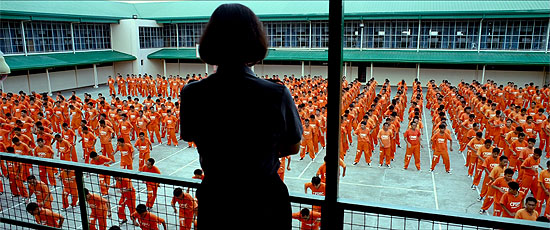
“Dance, my pretties!”
Obviously I consider the film a must-watch, but I do have several minor nitpicks. The pace of editing feels a bit sluggish at the start, so the film doesn’t hit its stride until about the 15 minute mark. I suspect that this is just a matter of getting acquainted to the film’s distinct rhythm, because I spent the rest of the running time with my jaw on the floor.
Also, there are a few sequences that might leave a few people scratching their heads, like the performance artist who sits at a desk and proceeds to cover his own head in clay, paint, and dirt. Some shots feel slightly gratuitous, such as a lingering shot of a child’s mummified body, or a single tear rolling down the flour-white face of a geisha. The 70mm format only makes the shots feel more gratuitous, capturing and amplifying every fine detail.
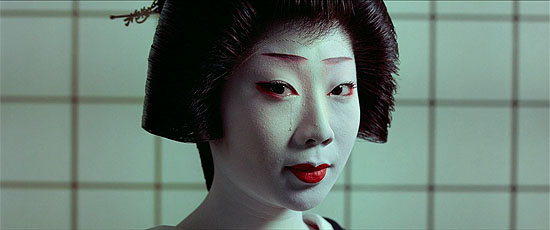
Auditions for the Coca-Cola ad in Blade Runner were very demanding.
It’s also difficult to say exactly what the ultimate lesson of Samsara is, but I don’t feel that there is one specific piece of fortune cookie wisdom to take away from the film. It’s a series of lush and showy images, all tied to together with a loose Eastern idea that life is a continuous cycle of life, death, and rebirth. Luckily, there’s more than enough thought-provoking substance in Samsara, preventing the film from becoming a celluloid circlejerk.
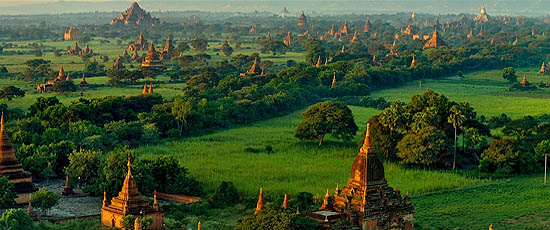
Yes, this is real. No, I don’t have proof.
The Package
This is a disc any home theater enthusiast should own. The video quality is not just good, it’s shockingly gorgeous. The cover of the disc boasts “8K UltraDigital HD”, but don’t be fooled by this. It’s a 1080p disc. To clarify, the 70mm print was scanned at 8K resolution, then the transfer was mastered at 4K resolution. The final 1080p encode is nothing short of breathtaking, and will be used as the reference disc in my collection.
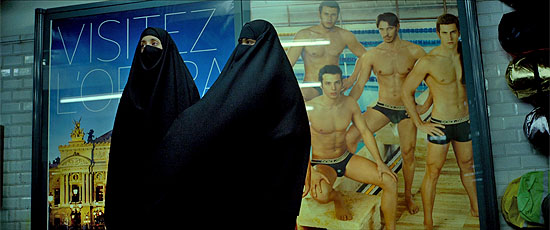
Alanis is going to have to rethink her definition of “irony”.
Equally beautiful is the lossless 7.1 DTS-HD Master Audio track. Seriously, you guys. Holy shit.
The disc also features some very informative featurettes:
- The Concept
- The Production
- The Editing
- The Musical Journey
- The Technical approach
- The Filmmakers
They run for a total of about fifty minutes, and provide a decent look at the making of the film. They’re pretty heavy on the interviews, and I wish they had more behind-the-scenes footage, but they’re certainly adequate. The only disappointment is the lack of a commentary. Otherwise, this disc is a knockout.
Rating: 




Out of a Possible 5 Stars